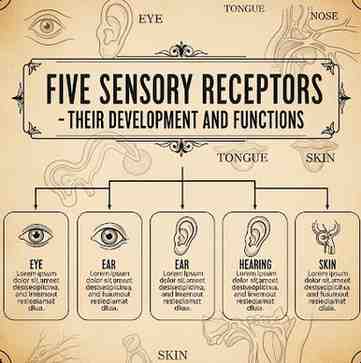
Your Account
Designed by Zeptt Technologies

In Ayurveda and modern anatomy, the five sensory organs (Panchendriyas) are described as vital instruments through which external information is received and processed by the body.
These include shrotra (ear), tvak (skin), chakshu (eye), rasana (tongue) and ghrana (nose) corresponding to sound, touch, vision, taste, and smell respectively.
These are jnanendriyas – the sense faculties responsible for jnana grahana (perception of knowledge).
SANSKRIT REFERENCE
चरक संहिता सूत्रस्थान 8/13
श्रोत्रं त्वक् चक्षु रसनं घ्राणमित्यष्टकं ज्नानेन्द्रियम्।
SHROTRA (HEARING) – EAR RECEPTORS
Located in the organ of Corti within the cochlea of the inner ear.
The sensory receptors are hair cells that detect sound vibrations and transmit signals via the cochlear nerve.
BD Chaurasia Reference: Volume 3 – Head, Neck & Brain (Chapter on Ear).
TVAK (TOUCH) – SKIN RECEPTORS
Skin contains multiple specialized sensory receptors:
Meissner’s corpuscles – touch
Pacinian corpuscles – pressure and vibration
Merkel’s discs – steady pressure
Free nerve endings – pain and temperature
BD Chaurasia Reference: Volume 1 – General Anatomy (Chapter on Skin and Appendages)
CHAKSHU (VISION) – EYE RECEPTORS
Located in the retina of the eye.
Sensory cells are rods and cones:
Rods – vision in dim light
Cones – color and detailed vision
BD Chaurasia Reference: Volume 3 – Head, Neck & Brain (Chapter on Eye and Orbit)
RASANA (TASTE) – TONGUE RECEPTORS
Sensory receptors are taste buds located in papillae (fungiform, circumvallate, foliate).
Five basic tastes: sweet, sour, salty, bitter, umami.
Innervated by cranial nerves – facial (VII), glossopharyngeal (IX), vagus (X).
BD Chaurasia Reference: Volume 3 – Head, Neck & Brain (Tongue and Oral Cavity)
GHRANA (SMELL) – NOSE RECEPTORS
Receptors located in olfactory epithelium of the nasal cavity.
Specialized olfactory nerve endings pass signals to the olfactory bulb.
BD Chaurasia Reference: Volume 3 – Head, Neck & Brain (Nose and Paranasal Sinuses)
AYURVEDIC VIEW :
Sense organs develop from Panchamahabhutas with a dominant element (bhuta) for each indriya:
Shrotra – Akasha
Tvak – Vayu
Chakshu – Tejas
Rasana – Jala
Ghrana – Prithvi
The manifestation of senses follows the sequence of subtle-to-gross development in fetal life.
SANSKRIT REFERENCE
अष्टाङ्गहृदयम् शारीरस्थानम् 1/9
श्रोत्रं त्वगक्ष्णो रसनं घ्राणं चेति पञ्च ज्ञानेन्द्रियाणि।
MODERN EMBRYOLOGICAL SEQUENCE (BD CHAURASIA – VOLUME 1, GENERAL EMBRYOLOGY)
Hearing (ear) – develops from otic placodes (4th week)
Vision (eye) – begins from optic vesicle and lens placode (4th–6th week)
Smell (nose) – develops from nasal placodes (5th week)
Touch (skin receptors) – from ectoderm and neural crest derivatives (around 6th–8th week)
Taste buds – appear from 7th–8th week, fully developed by 13–15th week
HIERARCHY IN SENSORY MATURATION (POSTNATAL FUNCTIONAL ORDER)
Touch – first to function in fetus
Smell – functional by 28th week gestation
Taste – functional by 30th week gestation
Hearing – functional by 25–28 weeks
Vision – last to mature, develops postnatally
AYURVEDIC PERSPECTIVE
Perception of external world (jnana prapti)
Maintenance of sharira (body), manas (mind) and atma (soul) connection
Vital for aharatmaka jnana (knowledge for intake of food), nidra (sleep), brahmacharya (celibacy), and dharma-acharana (righteous living)
SANSKRIT REFERENCE
चरक संहिता शारीरस्थान 1/84
इन्द्रियाणां प्रवृत्तिर्हि लिङ्गं चेतनावतः।
MODERN ANATOMY PERSPECTIVE
Each sense contributes to homeostasis, learning, and survival
Hearing – communication and balance
Touch – pain perception and reflexes
Vision – spatial orientation and cognitive processing
Taste – nutrition and toxicity detection
Smell – food identification, pheromone-based behavior